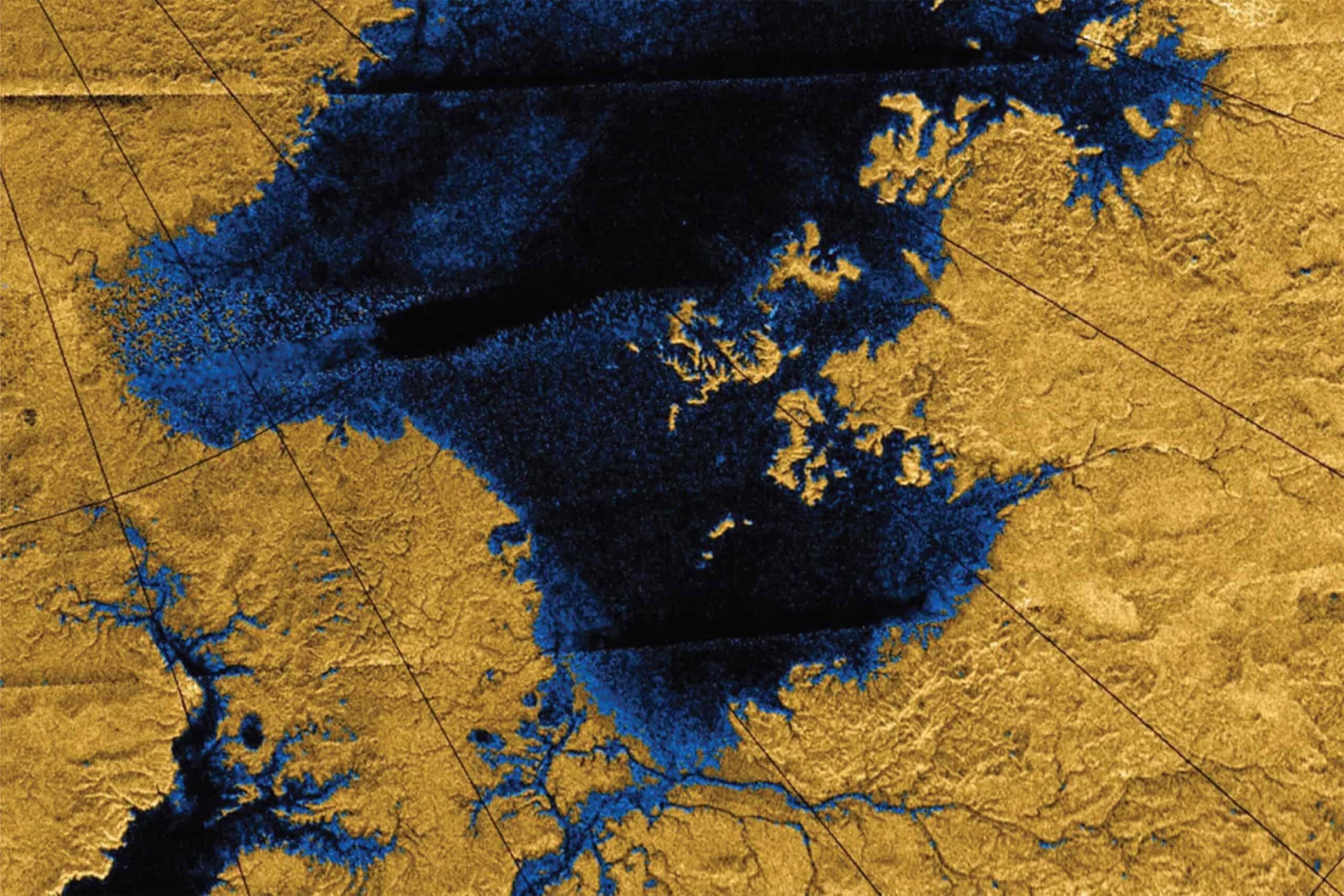
Rivers are not exclusive to Earth; they have also been found on at least two other celestial bodies within our solar system: Mars and Titan. Although Mars’ rivers have dried up over time, leaving behind only traces of ancient riverbeds and lakes, Titan, Saturn’s largest moon, boasts rivers that still flow with liquid methane.
Now, scientists from MIT have developed an innovative technique, using satellite observations to estimate the rate at which rivers transport fluid and sediment downstream. This method enabled them to assess the intensity of past river flows on Mars and the current flows on Titan.
Mathematical equations and extraterrestrial rivers
The geologists set out to determine the velocity and depth of rivers in specific regions on Mars over a billion years ago. They also estimated similar parameters for active rivers on Titan, despite the challenges posed by the moon’s thick atmosphere and distance from Earth.
Compared to Mars, Titan’s limited availability of surface images makes exploration more difficult. However, the new technique offers a means to make predictions and gain insights into these distant worlds without relying solely on data from future missions.
“With this technique, we have a method to make real predictions for a place where we won’t get more data for a long time,” said Taylor Perron, the Cecil and Ida Green Professor in MIT’s Department of Earth, Atmospheric and Planetary Sciences (EAPS).
“What’s exciting about Titan is that it’s active. And on Mars, it gives us a time machine, to take the rivers that are dead now and get a sense of what they were like when they were actively flowing.”
The researchers built upon the work of co-author Gary Parker, who developed mathematical equations in the 2000s to describe river flow on Earth. Parker’s equations established universal relationships between a river’s physical characteristics (such as width, depth, and slope) and its flow rate, incorporating variables such as gravity and sediment properties.
The research team adapted Parker’s equations to suit the limited measurements available for rivers on other planets. On Earth, scientists can directly measure a river’s width, slope, and sediment size, providing accurate inputs for the equations. However, measurements for extraterrestrial rivers are primarily derived from remote images and satellite elevation data. Multiple orbiters have captured high-resolution images of the planet’s surface for Mars, while though Titan is currently active, data is more scarce.
“What’s exciting about Titan is that it’s active. With this technique, we have a method to make real predictions for a place where we won’t get more data for a long time,” says Taylor Perron, the Cecil and Ida Green Professor in MIT’s Department of Earth, Atmospheric and Planetary Sciences (EAPS).
“And on Mars, it gives us a time machine, to take the rivers that are dead now and get a sense of what they were like when they were actively flowing.”
Rivers flowed on Mars for at least a million years
MIT researcher Samuel Birch devised a method to estimate river flow on Mars and Titan using only width and slope data, the most readily available parameters from remote observations. Through meticulous analysis and validation using data from 491 rivers on Earth, Birch demonstrated that predictions based solely on width and slope could accurately estimate a river’s flow rate.
Birch then applied these modified equations to Mars, specifically examining ancient rivers leading into Gale and Jezero Craters—locations believed to have been water-filled lakes billions of years ago. By considering Mars’ gravity, along with width and slope estimates derived from satellite imagery, the team predicted the flow rate of each river.
The team’s predictions revealed that rivers likely flowed for a minimum of 100,000 years at Gale Crater and at least 1 million years at Jezero Crater, suggesting the potential for supporting life during these periods. Furthermore, the researchers compared their predictions of sediment size on each river’s bed with field measurements collected by NASA’s Curiosity and Perseverance rovers, which confirmed the accuracy of their equations when applied to Mars.
One of the most intriguing aspects of this study is the enigmatic nature of Titan’s rivers. NASA’s Cassini spacecraft has captured images of the moon’s rivers, revealing a surprising absence of fan-shaped deltas at the mouths of most rivers—a phenomenon commonly observed on Earth. This led the team to wonder whether Titan’s rivers carry insufficient flow or sediment to form deltas.
The team focused on two locations where river slopes could be measured, including a river that feeds into a lake comparable in size to Lake Ontario, one of the world’s largest lakes. Although this particular river appears to form a delta as it enters the lake, most other rivers on Titan do not exhibit such features. Surprisingly, despite their estimated flow rates, these rivers lack the fan-shaped deposits commonly associated with river deltas on Earth. This suggests that additional factors are at play in forming river deposits on Titan.
The study also yielded another interesting finding regarding Titan’s rivers—they are wider and possess a gentler slope compared to rivers with similar flow rates on Earth or Mars.
“Titan is the most Earth-like place,” Birch says. ”We’ve only gotten a glimpse of it. There’s so much more that we know is down there, and this remote technique is pushing us a little closer.”
The study was published in the journal Proceedings of the National Academy of Sciences.









